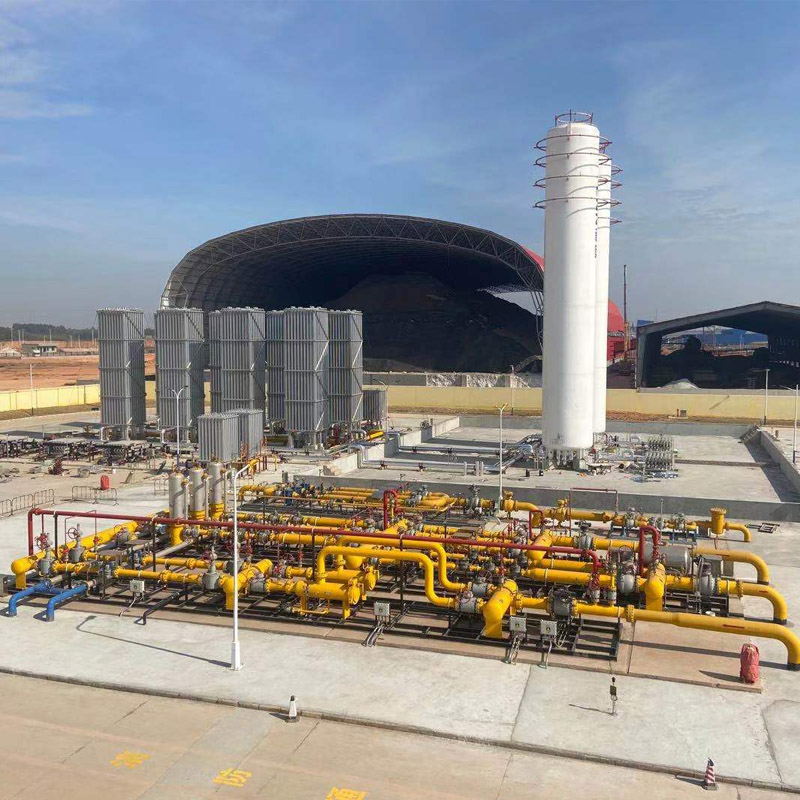
Sep . 12, 2024 03:34
Back to list
Gas Pressure Reducing Valve - Efficient Pressure Regulation Solutions
Understanding Gas Pressure Reducing Valves Importance and Functionality
Gas pressure reducing valves (PRVs) play a critical role in various industrial and residential applications where the regulation of gas pressure is vital for safety and efficiency. These devices are designed to reduce and maintain gas pressure from a higher level to a desired lower level. By ensuring that the pressure is optimized for specific applications, PRVs help in preventing damage to equipment and enhancing operational efficiency.
How Gas Pressure Reducing Valves Work
At the core of a gas pressure reducing valve is a simple yet effective mechanism. When high-pressure gas enters the valve, it passes through an inlet orifice, which is then controlled by an adjustable diaphragm. As the gas flows through, the diaphragm senses the pressure downstream (or the outlet side). If the pressure exceeds the set level, the diaphragm moves, adjusting the size of the opening through which gas can exit. This action effectively throttles the flow, decreasing the outlet pressure to the desired range.
One of the main benefits of PRVs is their ability to provide a steady and reliable pressure output, regardless of fluctuations in the incoming pressure or variations in gas demand. This consistency is crucial in processes ranging from gas distribution in residential heating systems to various applications in manufacturing plants and laboratories.
Applications of Gas Pressure Reducing Valves
Gas pressure reducing valves are widely used in many sectors. In residential settings, they are essential components of natural gas systems, ensuring that household appliances such as stoves, water heaters, and furnaces receive gas at safe pressure levels. In the industrial realm, PRVs are indispensable in processes such as chemical manufacturing, where precise gas pressure is crucial for maintaining the integrity of reactions and ensuring safety.
Moreover, PRVs are also utilized in laboratories and medical facilities where gases need to be delivered at controlled pressures for experiments or medical equipment. In each case, the efficient operation of PRVs helps to mitigate risks associated with gas leaks or equipment failure, thereby ensuring safety and reliability.
gas pressure reducing valve

Benefits of Using Gas Pressure Reducing Valves
1. Safety By regulating and maintaining appropriate gas pressures, PRVs minimize the risk of explosions or leaks that could arise from excessive pressure.
2. Efficiency PRVs enhance the overall efficiency of gas systems, ensuring that appliances and industrial equipment operate within their optimal pressure ranges, reducing wastage and improving performance.
3. Durability With reduced pressure levels, equipment experiences less stress, potentially increasing its lifespan and reducing maintenance costs.
4. Flexibility Many modern PRVs are adjustable, allowing users to fine-tune pressure levels according to specific requirements, adapting easily to changing conditions.
Conclusion
In summary, gas pressure reducing valves are fundamental devices that ensure the safe and efficient use of gases across various applications. Their ability to regulate pressure protects both equipment and users, making them an essential component in gas supply systems. As technology advances, PRVs continue to evolve, incorporating features that enhance their functionality and reliability, cementing their importance in today’s gas management solutions. Understanding and implementing these valves is vital for anyone involved in gas distribution and usage, ensuring safe and optimal performance in all scenarios.
Latest news
-
Safety Valve Spring-Loaded Design Overpressure ProtectionNewsJul.25,2025
-
Precision Voltage Regulator AC5 Accuracy Grade PerformanceNewsJul.25,2025
-
Natural Gas Pressure Regulating Skid Industrial Pipeline ApplicationsNewsJul.25,2025
-
Natural Gas Filter Stainless Steel Mesh Element DesignNewsJul.25,2025
-
Gas Pressure Regulator Valve Direct-Acting Spring-Loaded DesignNewsJul.25,2025
-
Decompression Equipment Multi-Stage Heat Exchange System DesignNewsJul.25,2025

